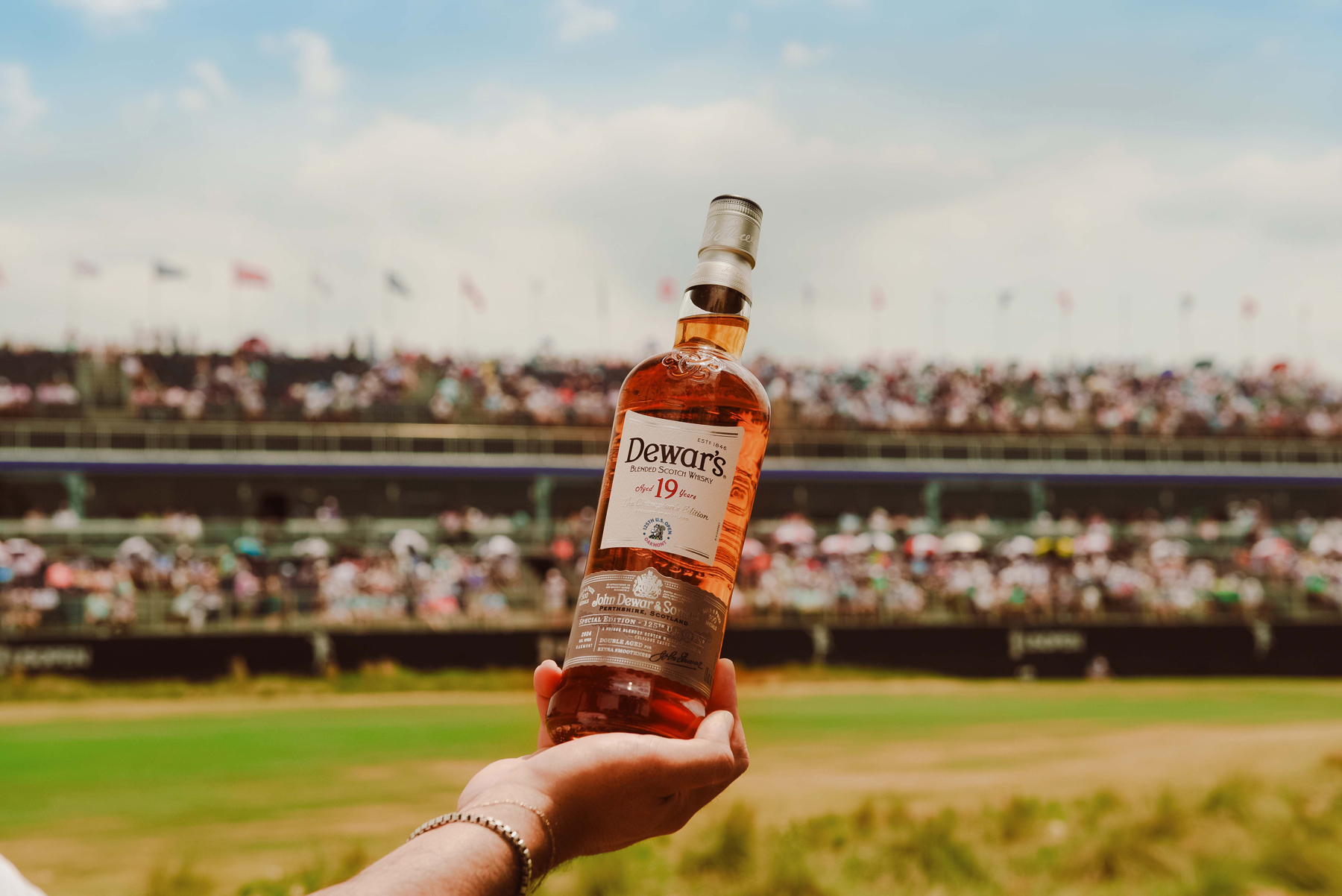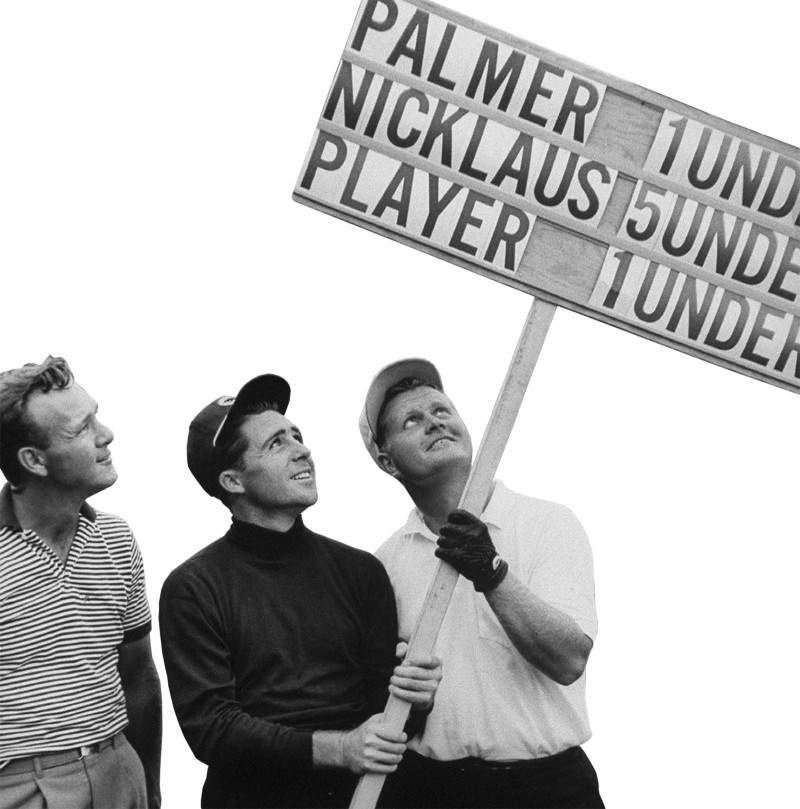

It was the year Arnold Palmer gave away the Masters with a blast out of a bunker and grabbed the [British] Open with a howitzer through a bush.
It was the year a South African in black was draped in a jacket of green; the year a golfer short enough to be a jockey made putts on the closing holes long enough to tie the PGA Championship (which he won the next day in a playoff).
And it was the year a pro nicknamed “The Machine” won the U.S. Open, the only Major in a career which others thought would give him many such titles.
It was 1961, a time of history, a time of memory, a time when woods—drivers and 3-woods—were made of wood. It was the time when Gary Player became the first non-American to win the Masters, when Gene Littler became the U.S. Open champion at an Oakland Hills course somewhat gentler than the one Ben Hogan 10 years earlier described as “This monster, I brought to its knees.” Littler, who subsequently lost playoffs for the Masters (1970) and PGA Championship (1977), used to say, “Golf is not a game of great shots; it’s a game of best misses.”
It was in 1961 when Arnie proved U.S. citizens not only belonged on British links but could be successful on them, no matter how inhospitable the conditions, earning both a victory and, from the spot at Royal Birkdale where he drilled a memorable 6-iron shot, a bronze plaque.
And it was in 1961 when 5ft 5½in Jerry Barber put on arguably the greatest putting show in modern history—and maybe ancient history—holing a 20-footer for a birdie on the 70th hole, a 40-footer for a par on the 71st and then a 60-footer for birdie on the 72nd to tie Don January in the PGA Championship at Olympia Fields, just south of Chicago.
So much has changed. Woods are no longer made of wood, and Tiger Woods is no longer steely last-day-dominant. Yet the rules of the game have not been altered. The golfer with the fewest strokes wins, now as then.
Courses though have been altered, lengthened, toughened. Take Augusta National where in 2013 the Masters was held for the 77th time. There’s another 500 yards out there now and, since 1999, short rough which Masters officials designate as the “second cut,” yet Amen Corner remains Amen Corner, the fulcrum of which is the 12th hole, the par-3 over Rae’s Creek.
Perhaps the revisions are most apparent at Augusta, because it’s easy to compare from April to April. But the other venues utilized in 1961 have moved on too.
Oakland Hills, in suburban Detroit, hosted the U.S. Open in 1996, a Ryder Cup in 2002 and a PGA Championship in 2008.
Birkdale (now Royal Birkdale) is a fixture on the [British] Open rota, and on the day in 2008 when the Claret Jug was lifted by Padraig Harrington after a gallant performance by then 53-year-old Greg Norman, the wind was reminiscent of 1961, if not quite as strong.
And in 2003, Olympia Fields provided the stage for Jim Furyk to win his lone Major, the U.S. Open. As was the case with Barber—who in 1961, at 45 years 3 months 6 days, was then the oldest ever to win a Major (later, Julius Boros took the 1968 PGA, aged 48, and Jack Nicklaus the 1986 Masters at 46)—Furyk was a brilliant putter. Unlike Barber, Furyk was, is, friendly.
“A round with Jerry was like trying to swim the English Channel with a backpack,” Eddie Merrins, pro-emeritus at Bel Air Country Club in Los Angeles, once said. Barber, who died at the age of 78 in 1994, was feisty and antagonistic, but a short-game genius nevertheless. He was also a fitness guru ahead of his time.
Palmer, on the other hand, was charismatic and heroic. By the time he pitched up at Birkdale, he had won the 1958 Masters, the 1960 Masters and the 1960 U.S. Open. Already he was the game’s superstar. Yet, every golfer makes mistakes. It’s the nature of the game. At the 18th hole of the 1961 Masters, Arnie was guilty of an infamous howler.
The scheduled Masters final round on Sunday was washed out, but only after play was well underway. Fifty years ago, unless a round was finished all scores were negated. So when the tournament resumed on the Monday, Player still enjoyed the four-shot advantage he held on Saturday evening.
Player double-bogeyed the par-5 13th and by the time Palmer hit his tee shot on 18 in that 1961 Masters he was in front by a shot.
However, Arnie hit his approach into the bunker right of the green, blasted over the green down the hill, and took three from there for a double-bogey six. Arnold Palmer was shaken and, just like that, Gary Player was the champion.
“I thought,” he would say, “sixes were for other people.” This time the Masters was for another person—Player—while Palmer, undaunted, went on to claim two more green jackets.
If one shot lost the Masters for Arnie, one shot won the [British] Open for him. He had entered the Open Championship, as it is formally known, for the first time in 1960 and had a chance to win before finishing a shot behind Australian veteran Kel Nagle at St Andrews.
The weather that week on the east coast of Scotland was dreadful and it wasn’t much better
12 months later at Birkdale, on the Lancashire coast a few miles north of Liverpool. Heavy rain on day one was followed by winds so strong—blustering at an estimated 50mph—that the wooden soft drink boxes were blown around.
The third day, when two rounds were scheduled as was then the fashion, rain forced not only a postponement but also brought the threat that the tournament might be canceled entirely.
Somehow, the golfers came back on Saturday and Arnie, his low tee shots boring into the gale that ruined the games of others, built a lead.
On what was then the par-4 15th hole—later, after renovation, the 16th—Palmer’s drive missed the fairway to the right and plunked under a small bush. His caddy, Tip Anderson, pulled a club from the bag.
“I remember the horror look he gave me,” Arnie recalled, in his autobiography, A Golfer’s Life, “when I declined the wedge and reached for the 6-iron. I reasoned if I could get the clubface on the ball cleanly I could get myself out of trouble.”
He did both, coming up 15 feet short of the hole. Arnie missed the putt, but that didn’t matter. He didn’t miss the win nor did Birkdale miss a chance to provide a special reward, still anchored in the sandy soil.
“I had my par,” he would point out, “and I had my plaque.”
Follow Us On


| Cookie | Duration | Description |
|---|---|---|
| cookielawinfo-checkbox-analytics | 11 months | This cookie is set by GDPR Cookie Consent plugin. The cookie is used to store the user consent for the cookies in the category "Analytics". |
| cookielawinfo-checkbox-functional | 11 months | The cookie is set by GDPR cookie consent to record the user consent for the cookies in the category "Functional". |
| cookielawinfo-checkbox-necessary | 11 months | This cookie is set by GDPR Cookie Consent plugin. The cookies is used to store the user consent for the cookies in the category "Necessary". |
| cookielawinfo-checkbox-others | 11 months | This cookie is set by GDPR Cookie Consent plugin. The cookie is used to store the user consent for the cookies in the category "Other. |
| cookielawinfo-checkbox-performance | 11 months | This cookie is set by GDPR Cookie Consent plugin. The cookie is used to store the user consent for the cookies in the category "Performance". |
| viewed_cookie_policy | 11 months | The cookie is set by the GDPR Cookie Consent plugin and is used to store whether or not user has consented to the use of cookies. It does not store any personal data. |